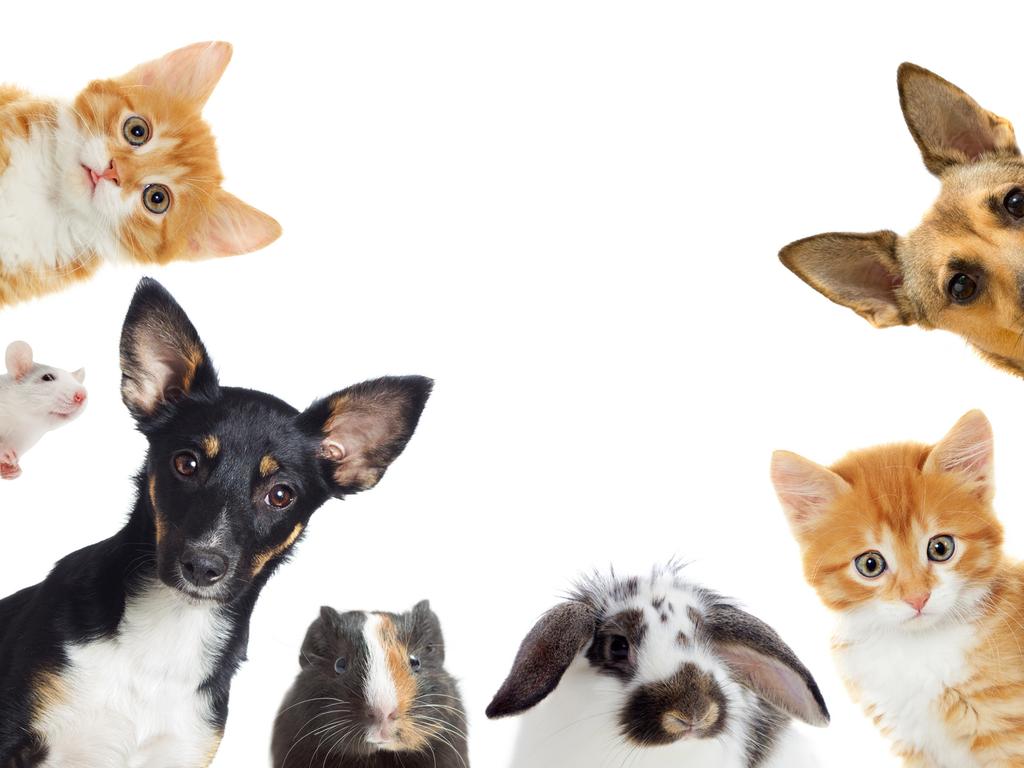Flying vet Ameliah Scott gives farmers and their animals a lifeline in the outback
Dr Ameliah Scott flies thousands of miles across NSW to tend to sick animals. Sometimes it’s heartbreaking. Here’s why she believes a lot of young vets leaving the profession far too early.
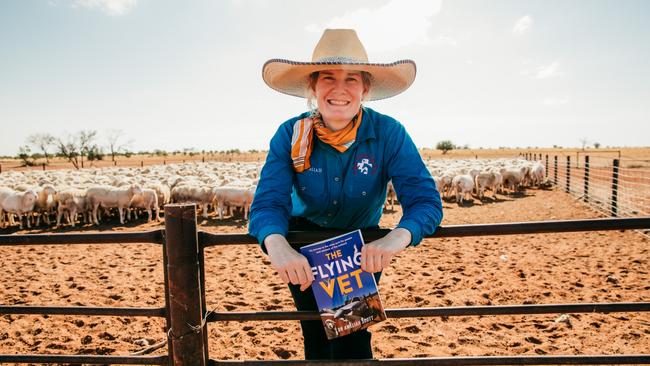
I pushed the aeroplane out of the hangar onto the end of our dirt runway, lining it up in the direction of take off. The plane’s coat of fresh white paint glistened in the clear morning sun, the green and yellow stripe down the side giving her an extra smart look. As I dipped the tanks to check the fuel, Dad leaned against the fuselage, his mop of red hair aflame in the golden light. Dad knew his plane like the back of his hand – he flew her nearly every day.
The Cessna 172’s cabin is more Mini than Merc. We pulled our doors closed and donned our headsets. Turning the key, the old girl started instantly, the engine humming as I did the pre-take-off checks. I released the brake and pushed the throttle in, feeling the plane gather speed as we rolled down the strip. As we reached 55 knots, I gently pulled the column towards me. Within seconds we were off the ground.
“‘I know you haven’t started your vet practice yet,” Amanda had said over the phone the day before, “but I was wondering if you’d be able to come out and see my old pony. She’s nearly 35 and has lost a lot of weight recently. I think it might be time to say goodbye.”
I was still a novice at bush flying. I’d learnt to fly in northern Victoria, with plenty of landmarks to find my way around, whereas out here in western NSW everything was red. The airstrips were barely distinguishable, which made them hard to find, and it was difficult to judge distances when landing.
We were met at the strip by Amanda’s father-in-law, a lovely man who greeted us with warm handshakes. He explained Amanda was over at the stables with her horse, saying what she knew would most likely be her final goodbyes. Soon I spotted Amanda walking slowly up to the house, leading the old pony along. The beautiful old horse’s head hung low as she made her way beside her owner. “She’s had a good life,” I said. “You’ve cared for her for a long time. But putting her down is the kindest thing to do now. Let’s give her a nice end, rather than watch her dwindle even longer.”
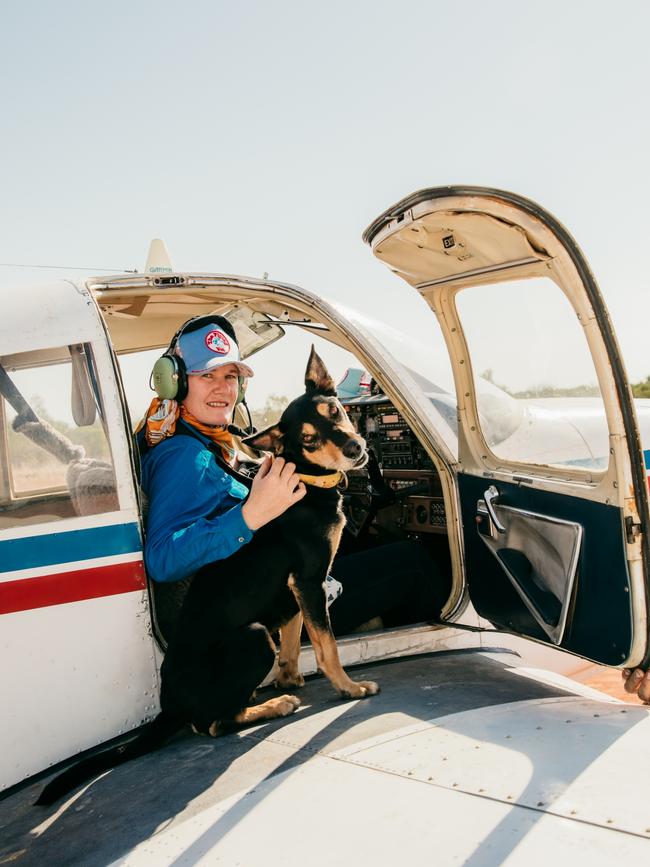

A large part of the role of veterinarian is to expose the amount of pain an animal is in. We have a moral duty to put the wellbeing of the animal first, even when the kindest option is to put an animal to sleep. Sometimes this is because an illness is too far progressed for medical intervention, or because the expenses of potential treatment are clearly beyond the means of the owner. Other times, as with Amanda’s pony, euthanasia is just bringing forward the inevitable in order to end the animal’s suffering. Eventually, most come to accept that euthanasia is the kindest option.
“Have you got a nice spot in mind?” I asked Amanda. She indicated towards the yards.
Giving her shoulder a soft squeeze, I said, “It will be OK. She’ll have a good end. And it looks like a lovely resting place.” Slowly, in silence, we led the horse over to the chosen site. There is not much you can say in these circumstances. We came to a stop in front of the freshly dug trench. While it sounds macabre, when it comes to euthanising large animals, performing the procedure at the place where they will be buried is the most practical and kindest way for all involved. Some animals are just too big and heavy to move after they’ve been put to sleep.
Amanda held the pony still while I sedated her then inserted the catheter. We then led the old pony into the trench. “This next step will be fast,” I said. “I’ll get you to hold the halter and pat her while I inject the anaesthetic, but once it’s all been injected, I’ll take her lead rope and you will need to step away. She’ll go down in a hurry.”
Amanda fondled the pony’s forelock as I administered the “green dream”. I took the rope from her hands as she stepped back, the pony sinking back on her hind quarters then dropping onto her side. Amanda and I stood in silence for a few moments before I confirmed death, checking with my stethoscope that there was no heartbeat. I removed the halter and rope and handed them to Amanda.
“Thank you,” she said, as tears rolled down her cheeks. I took her arm in mine and steered her towards the house. “You’re welcome,” I said. A few minutes later Dad and I were back in the plane, Amanda and her father-in-law waving as we took off. An easy, uneventful trip home drew my very first job as a flying vet to a close.
It’s very difficult to detach yourself from your livelihood when you live where you work, and when you see animals unwell, or in the case of drought starving to death, and aren’t able to help them, it weighs down on you. It’s a problem that has been exacerbated in the bush for decades, due to the peculiarly Australian taboo, amongst men especially, on discussing how they’re feeling. The suicide rate amongst farmers has been reported at 60 per cent higher than non-farmers. Service-providing professionals, such as myself, are the only outside contact many farmers have away from their social circles. They often find it easier to talk to us – as “outsiders” – about their struggles. When you have a role that demands you care for many animals and their owners, it can also become very dangerous to your own mental health. Compassionate care allows you to sympathise with your clients while remaining at arm’s length emotionally. It’s what enables you to conduct your work for the long term in a professional manner. At the risk of sounding harsh, you must detach yourself as much as possible from the emotions that come with the inevitable loss and suffering, otherwise you will certainly break.
Unfortunately this is a distinction that too many in the veterinary profession fail to learn, and it is another contributor to a lot of young vets leaving the profession far too early
The plane bumped about, the April day unseasonably hot, with strong northerly winds lifting the dust into a storm. Not the best flying conditions, especially in my condition; I was five months pregnant. During dry spells, as this country near the NSW/ South Australia border was still going through at the time, everything blurs into one. My eyes rarely left the compass as I kept the aircraft locked on its heading. Eventually, I switched my UHF to their channel. “Calling Burr Creek, anyone on channel?”
Hannah was a small woman in her late 50s, standing about 168cm. She was a lady of the land, the lines across her tanned face a testament to the hard work she had done. My job today was to do pregnancy tests on Hannah’s nephew Steve’s cattle on the adjacent property, so she would drive me the 40-minute trip over there. It would be a “quick job”, I was told. How many times have I heard that? “It’s only a few hundred head of cows”, Steve had told me.
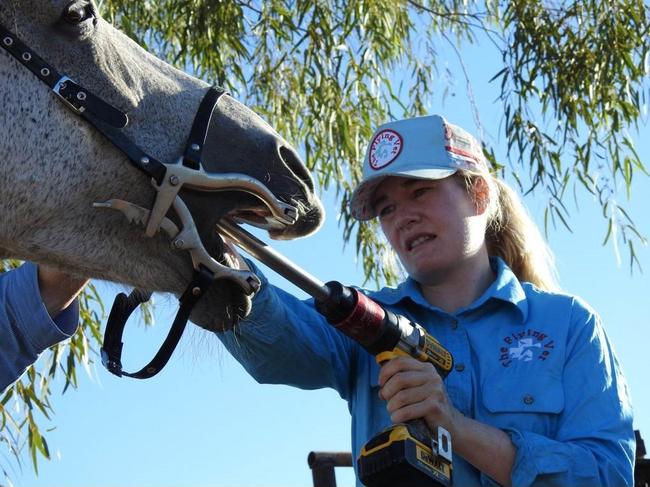
I started feeling uneasy. If the cattle weren’t in the yards by the time we got there, there wasn’t much chance I would get the job done in time to fly home today. Mustering on large properties is a major exercise. Essentially, it means rounding up all the animals in a very large paddock. The beasts can be spread out over several kilometres when we start, so first we have to find them all. As we approached the yards, I could see they sat empty. Beyond them, still some distance away through the scrub, a telltale cloud of dust signalled the location of the mob. I couldn’t help the nagging feeling that it was going to be a long afternoon.
The cacophony of mooing cattle and revving motorbikes grew to a crescendo as the mob approached, as did the cloud of dust. Finally all the animals were herded into the yard, the bike riders parking behind the gates once they were latched closed. As the three men walked towards the ute, Hannah and I got out and pulled cold drinks from the Esky. Steve, Brayden and Junada accepted these gratefully.
As I picked up my box of gloves and wandered over to the yards, Steve and Brayden went to a trailer and lifted out a set of cattle scales. I groaned inwardly. I hadn’t banked on the cattle being weighed. It’s a tedious task and I would have to wait for each cow’s weight to register before I could step in behind them to do pregnancy diagnosis.
Pregnancy testing is a messy job. You’re literally up to your armpits in cow shit, your arm inserted deep into the cow’s rectum to the point where you can feel the uterus underneath. I yell “empty” when there’s a small muscular uterus and “pregnant” when the uterus is fluid-filled or I can feel a developed calf foetus, with its leg or nose greeting my fingertips.
I can usually do close to a hundred cows an hour through a good crush with plenty of helpers keeping the cattle flowing along. In this case it took an hour to get through the first 40 cows.
As they always do, each cow jolted about when I inserted my arm into her backside – I guess this is understandable – but the crush and gates ensured that my own unborn child was kept safe through the process.
By now I was resigned to not being able to get away before dark.
We had worked though half the mob when a wagon drove up to the yards. Out climbed a bunch of kids, as well as Steve and Brayden’s wives, Michelle and Tania. Seeing we were falling behind pace, Tania offered to keep an eye on the kids as Michelle pitched in to help keep the feed of cattle flowing.
At the end of the day’s work, Hannah and I watched the cattle trot out of the yards and wander back to their pasture. I took a few minutes to admire the sight before me. It’s rare to see such a large gathering of family working in unison. This particular family has achieved much over the years. Each couple had their own property that they lived on and managed, but they all pitched in together on the big jobs. I spent a pleasant night at the homestead. If I had to be held up somewhere, this was the place to be. Good food and good company. What more could you wish for in life?
Where we live in western NSW, the distances are vast. The nearest town of White Cliffs has a population of under 200. When we talk about going to “town”, we’re referring to Broken Hill, a 540km round trip away. That’s where our nearest supermarket is. The family property is one of those outback Australian stations you imagine from books like We of the Never Never: wide, flat and dusty under an uninterrupted dome of cobalt sky.
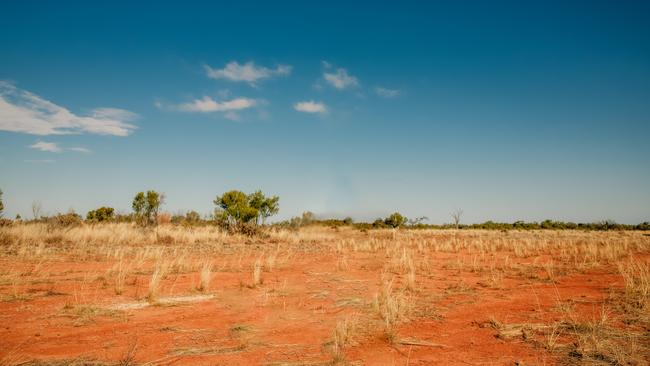
We have roughly 60,000 hectares of red earth. It’s mostly flat country with occasional rocky hills, a mixture of scrub bush and open grasslands. We run cattle, sheep and goats on large tracts of land, where they fend for themselves on the native pasture, the number of animals (and hence the income off the farm) depending on the amount of feed available – less in drought, more after rain.
The memory of the last drought is always fresh, and you’re always bracing for the next one. To farm out here is to live forever hoping for the next big rain. I represent the fifth generation of my family to live here, and soon there would be a sixth.
It was eight o’clock on a Friday night in late winter. My husband Brendan was watching the AFL and I was reading a book when a gentle double kick from the little being inside me broke my waters. “Right, everything in the car. Now!” Brendan looked up in disbelief, a block of chocolate poised halfway to his mouth. He grabbed my pile of hospital-ready items from the front door and threw them into the ute.
I called the nearest hospital, 80km away in Wilcannia, and let them know we were on our way in. By the time we got there my contractions were six minutes apart. Wilcannia is only a very small health service, so they had arranged for the Royal Flying Doctor Service to meet us and transfer me to Broken Hill. Brendan would follow in the car. During the flight, my labour really kicked in. The contractions ramped up as we left the tarmac, and by the time we got to Broken Hill they were only two minutes apart. Brendan arrived just as our daughter was being placed into my arms.
We named her Lindsay, after the man who’d sold me his aeroplane, and started to come to terms with the enormous impact this little bundle would have on our lives. Like all parents, we completely underestimated the level of disruption a newborn would bring, but we got to work making adjustments to fit her in.
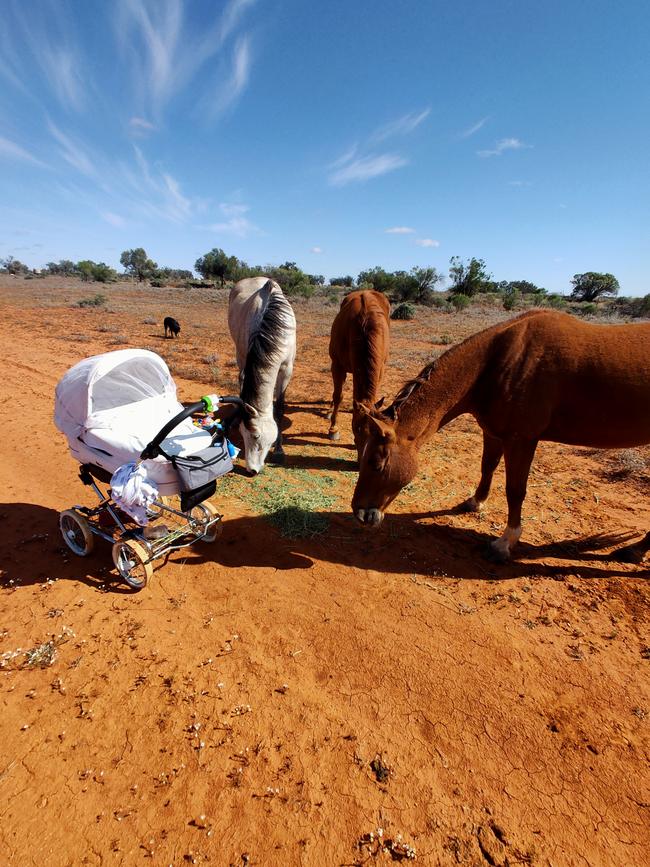
Early one morning in late 2021, I found myself back where I had started: sitting next to Dad in his Cessna. I’d been up early to prepare my own plane for a flight to a station west of us, but after powering up I discovered a problem with the Arrow’s propeller. I looked across at Dad’s Cessna 172. She’ll have to do.
I did a check over the Cessna then raced over to the main house, where I knew Dad would still be enjoying his morning coffee. “My plane is a no-go this morning. Could I take yours?” I said, adding, “and could you come?” Ever the good bloke, Dad agreed to join me for this little adventure. It was a short trip to do still more pregnancy testing of cows. I had to be back by lunchtime as I had a baby to breastfeed.
I couldn’t help thinking about how far I’d come since that flight with Dad to Amanda’s place a few years earlier, my very first job as a flying vet. Since then, I’ve accrued my own aeroplane, a husband, a daughter and, as I write this, a son. I’d set up and equipped my own practice, with a growing list of clients spread between the Queensland and Victorian borders, and we were living on my favourite piece of this planet. I had no desire to be anywhere else.
Edited extract from The Flying Vet by Ameliah Scott (HarperCollins, $34.99)


